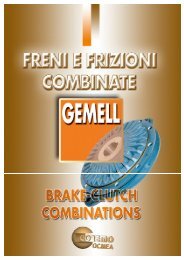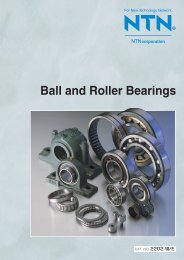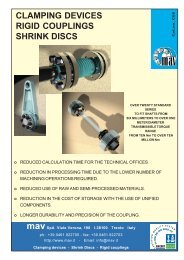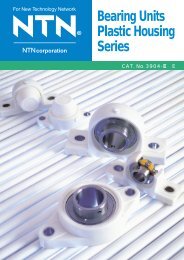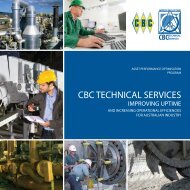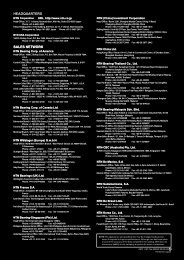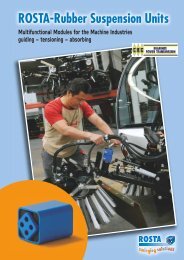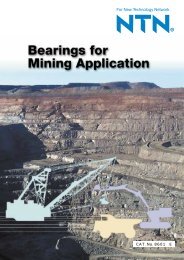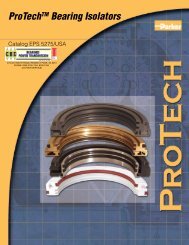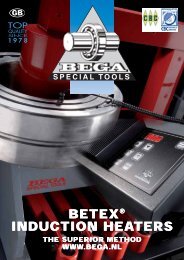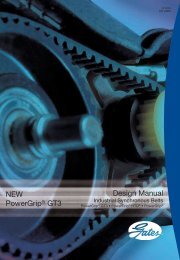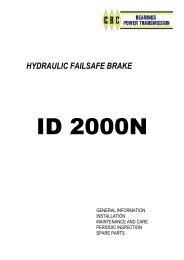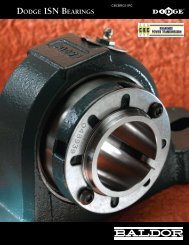Needle Roller Bearings - Ntn-snr.com
Needle Roller Bearings - Ntn-snr.com
Needle Roller Bearings - Ntn-snr.com
Create successful ePaper yourself
Turn your PDF publications into a flip-book with our unique Google optimized e-Paper software.
Seals<br />
NTN<br />
Seals<br />
Seals<br />
These are the special-purposed seals for needle roller<br />
bearings whose cross sectional height is designed so<br />
small as to match applicable needle roller bearings.<br />
These contact seals are made of synthetic rubber<br />
reinforced with steel plate, being then used in operating<br />
temperature range of -25 to +120˚C and, under<br />
continuous running, at 100˚C and less. Further, feel free<br />
to contact NTN for the use of these seals under special<br />
operating condition, e.g. operating temperature of over<br />
120˚C.<br />
Types of seal<br />
Two different seal types are available; one is Type G<br />
with one lip and another is Type GD with two lips. In<br />
addition to these two, sliding rubber seals (LEG, LEGD),<br />
wherein lubrication property was assigned to a rubber<br />
material fulfilling low torque under an non-lubrication<br />
environment, are also manufactured. Feel free to contact<br />
NTN for the detail of these seal types.<br />
Fitting relations<br />
The seal contact surface must be finished by grinding,<br />
after hardened, to get its good sealing performance. In<br />
addition, harmful flaw and indent are not allowed to exist<br />
on the seal contact surface. Where the inner ring raceway<br />
surface is used as seal contact surface, a wide inner ring<br />
must be used.<br />
When fitting a seal in a bearing, it is desirable to taper<br />
the shaft end face or the housing end face so as to<br />
protect the seal lip and outer surface from damaging, as<br />
illustrated in Fig. 4. Where shaft end is not tapered or<br />
chamfered (rounded), it is re<strong>com</strong>mended to a fitting jig as<br />
illustrated in Fig.5. Regarding the seal to housing<br />
interference, a adequate interference can be got in the<br />
usual housing tolerance range of G7 toR7.<br />
Furthermore, it is re<strong>com</strong>mended to apply pre-coat<br />
of a lubricant to the seal lip before fitting seals G and<br />
GD, for better lubrication. Further, when fitting a seal<br />
and inserting it through a shaft, take good care to<br />
protect its lip from deforming.<br />
30˚<br />
Fitting jig<br />
Fig. 4<br />
Fig. 5<br />
Fig. 1 Type G (LEG)<br />
Fig. 2 Type GD (LEGD)<br />
Seal application examples<br />
Figs.6 to 8 illustrate design examples using these seals.<br />
Where seal contact surface and lubricating condition<br />
are good, Type G with one lip can be used up to 10m/s<br />
maximum at peripheral speed and Type GD with two lips<br />
used up to 6m/s maximum.<br />
This seal is intended to hold grease and to<br />
prevent dust invasion from outside. It has no<br />
function to hold lubrication oil, etc. unlike oil<br />
seal.<br />
Fig. 6<br />
Composition of nominal number<br />
Nominal seal number is <strong>com</strong>posed of type code (G,<br />
GD) and dimension code (bore dia.outer dia.width).<br />
Fig. 7<br />
G 20264<br />
Dimension code<br />
Type code<br />
Fig. 3<br />
Fig. 8<br />
B-232




